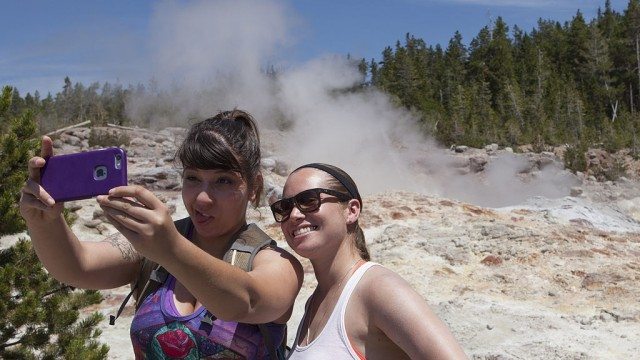
Eric Galatas, WYOMING NEWS SERVICE–Yellowstone National Park is studying how human behavior affects natural ecosystems.
 More than 52,000 resource warnings were issued as visitation passed the four million mark for the first time last year, and 2016 attendance is expected to be even higher. With increased numbers come increased violations, and staff members have turned their eyes away from wildlife to study how humans behave in the park. This summer has already seen two deaths, as well as incidents when people got too close to elk and bison.
More than 52,000 resource warnings were issued as visitation passed the four million mark for the first time last year, and 2016 attendance is expected to be even higher. With increased numbers come increased violations, and staff members have turned their eyes away from wildlife to study how humans behave in the park. This summer has already seen two deaths, as well as incidents when people got too close to elk and bison.
Ryan Atwell is the park’s new social science coordinator.
“We’re trying to get better information on visitor behavior,” he said. “Our employees, at least, feel at this point that, because of the amounts of visitation and traffic and crowding, they feel like the atmosphere in the park is changing. They say things like, ‘It’s starting to feel more like an amusement park than a national park at times.'”
Last August, after the park issued more than 52,000 warnings, Atwell surveyed staff to find out where and when congestion was highest, which restrooms had long lines, and which pull-outs tourists had turned into their own unauthorized restroom sites.
Atwell said adjustments have been made to keep visitors and natural resources safe. He reports the park is fully staffed this year, more toilets and trash cans have been added, and a new communications strategy was launched to emphasize safety regulations and expectation management.
“Helping visitors to understand that, if they come during the peak time of the summer, during the sort of 9-to-5 hours of the day, they’re likely to experience waits at the gate, crowding, congestion,” he said.
He adds social media is another challenge. At key attractions, Atwell said every other person seems to be taking a selfie, or looking at a phone instead of watching where they’re walking. He said one option under consideration, to keep foot traffic moving, is to build additional pull-outs on boardwalks.
“More and more people, and increasingly globally more and more people, want to visit a place like Yellowstone in the summer,” he added. “With the need to protect the natural resources here, with the need to steward visitor experience, and then with limited staffing, we’re really looking at all the different solutions that might be on the table.”
Atwell encourages visitors to pack plenty of patience for the best experience. He also suggests people stay on the boardwalks to avoid geothermal burns; practice “safe selfies” by not approaching wildlife; drive the speed limit, and use pull-outs to view animals so other cars can pass.


